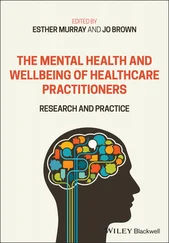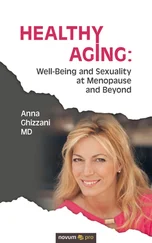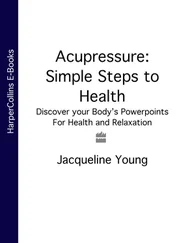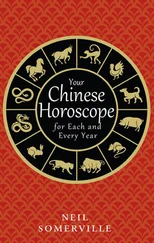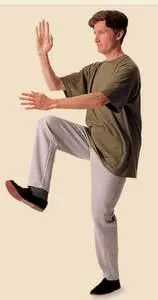
YANG BODY SHAPE
OPEN AND CLOSED
1 Stand with your feet apart, lift your arms up and out in a welcoming gesture, and imagine each body part and your feelings opening up.
OPEN AND CLOSED
2 Slowly draw your arms in, crossing them over your chest, contemplating this closed position. End by lowering your arms and standing erect for a while.
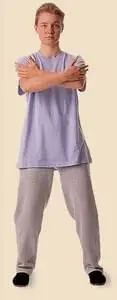
FULL AND EMPTY
1 Imagine colored liquid filling you from your feet up. Experience every cell in your body expanding as it rises, moving your arms out as if you are inflating.
FULL AND EMPTY
2 Then close your eyes and imagine your body is hollow. Visualize yourself becoming emptiness.
TAI CHI OFFERS more than exercises for health, it also provides a program for self-development. The influential teachers Cheng Man-ch’ing and Chi Chiang-tao mapped out a sevenfold path to tai chi practice. For just as the postures are composed of seven basic qualities, so there are seven dimensions to practice, seven steps to progress through the form.
Tai chi teaches you to respond to a partner’s movements. Sumo wrestlers use force against force.
Imagine trying to stop the flow of a river or make it flow faster. The way of tai chi is always to flow with the river. Beginners may be surprised to find that they have been conditioned to fight the river’s natural flow, to use force against force. We are trained to keep to timetables and meet deadlines rather than follow the natural rhythms of our body and mind.
Tai chi teaches people to correct this imbalance by becoming alert to intelligence from within while learning to listen to what is happening outside and to respond to others. It teaches patience, the ability to wait, poised and quiet, for the right moment to move or act.
When tai chi movements are performed correctly, they work to calm and focus the mind, so that mind, energy, and body work in harmony. The seven dimensions of tai chi practice are described next, and represented on the graph.
The seven dimensions of tai chi practice, described previously, may be represented by a graph on which you map your progress along the path to natural way. The vertical axis measures your progress on a scale from 1 to 10. A teacher might help you assess your abilities in each area. Draw a new graph to review progress after a year. Your tendency to use force against force should have fallen and your energy and coordination have risen.
Are you trying to dominate by blocking your partner’s responses, or responding too quickly, before your partner stops pushing? If so, you are using force against force. In this interaction you enter into a dialog, inviting your partner to respond to your push. Do not try to force one. When receiving a push, listen as the movement unfolds, knowing that each push has its lifetime. Do not stop it by force, but move in response to the other person. This is the natural way.
Although the rules of tai chi are challenging, they are effective. Hands and feet need to be correctly aligned, placed, and arranged; doing this enables you to reap the richest reward from practice. And bear in mind that improvement often comes without a struggle. Working on the mind, for instance, sharpens concentration, which brings about improvements in technique.
Beginners feel all left feet. As practice evolves, feet, legs and pelvis, spine, arms, and hands feel more connected, and movements of head and body begin to feel coordinated. There comes a time when breathing and movement of all parts of the body follow one rhythm, and this cohesion is jin (whole body energy).
Tai chi movements stimulate the chi circulating in the body and the musculoskeletal system, exercise the internal organs, and open the meridians, allowing chi to build. Resting the mind quietly in the lower tantien energy center after practice also builds chi. People often feel contentment and greater vitality after practice.
Cultivating awareness is the key to mind control – if your mind keeps returning to one of the day’s events while you are practicing, acknowledge it. Notice where your mind is directed as you move. Soon, there will be moments when it becomes absorbed in the moves you are making, and the moments will extend to minutes. Then you find your mind making visualizations at will.
There is a dynamic equilibrium between earth and spirit in tai chi. The way to spirit is through the earthing of the body, and the stronger the connection with the earth, the greater the possibilities for spirit. One of the joys of practice is allowing the body to radiate the spirit that powers each posture – the spirit of fire or of clarity. Enjoy the spirit of the moment; you may feel poised, like a cat about to pounce, then you might become quiet, nurturing the spirit inside.
Follow the natural way to emerge into the seventh dimension. Let go of the binding patterns of force against force, become receptive to the natural way of things, and learn to wait for the right moment to move. Attaining natural way is a sevenfold process. The qualities work together to realign the whole person toward natural way.
This visualization may take a while to become real, but it will show how your mind and your energy can work together. Turn your left palm toward you. Point the fingers of your right hand toward your left palm keeping them about six inches away. Imagine the fingers of your right hand are brushes. Paint strokes very slowly over your left hand. At first you may not sense anything, but soon you will feel the light brush strokes moving across the sensitive palm of your hand as clearly as if you were really painting it.
Movement, Health, and Body Awareness
THE BODY IS an extraordinary, wonderful instrument. It is mechanically well designed and physically intricate, yet it also houses the spirit. The body bestows on its owner the gift of movement, yet people living a modern lifestyle rarely if ever make the most of this ability, and many have forgotten or never discovered their bodies’ capabilities. Yet not only is the body designed to move, it needs to, in order to stay healthy. Tai chi provides a form of exercise that offers a remedy for the ills of modern living, a supportive answer to the body’s need to move.
While they are still developing in their mother’s womb, unborn infants know how to move. They swim, dance, push, wriggle, and kick. Immediately after birth, babies move instinctively and without inhibition, and during the early years, movement plays an essential part in childhood learning and personal development. Young children crawl, roll, totter, and fall; as they grow they play on swings, slides, roundabouts, and with each other. A child’s world is largely body-based.
Relatively few adults in modern industrial countries still have to cut hay, harvest crops, fetch water, or chop wood by hand in order to survive. Most are relieved of such tiresome tasks and chores by modern economic organization, which uses machines to perform repetitive jobs, releasing people to attend to tasks carried out by telephone, pager, fax, or computer, reached by automobile, rail or air link, e-mail or internet. Many are not forced by their work to stretch or stress their bodies. Problems tend to begin shortly after the point where demands cease to be made of the body. Arthritis, for example, is associated with under-exercising the joints. One physiologist has estimated that 150 years of good service could normally be expected from the superbly designed joints of the human frame. Yet they waste away, working at a fraction of their potential, while the body sits on office chairs or lounges on sofas.
Читать дальше





